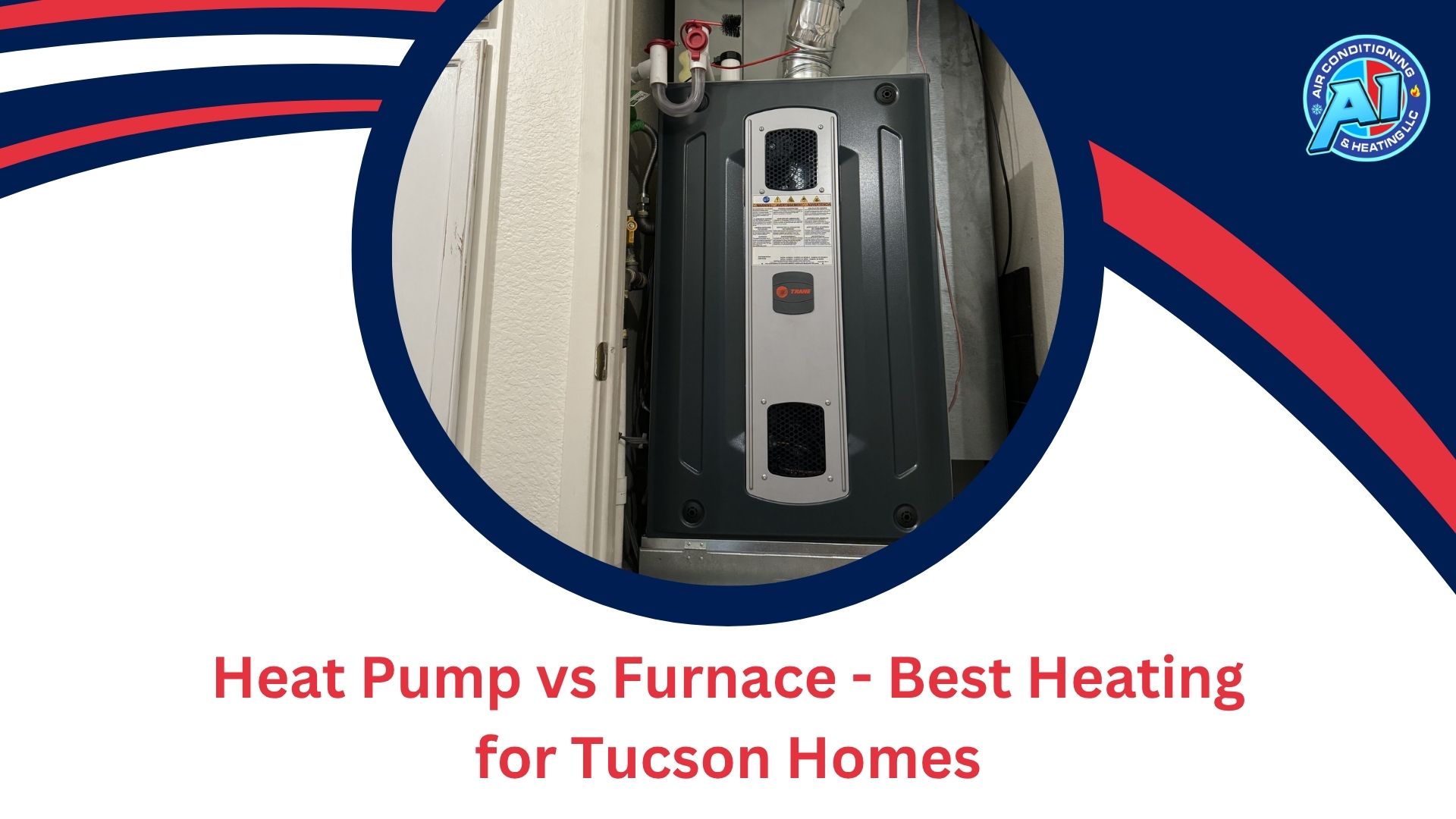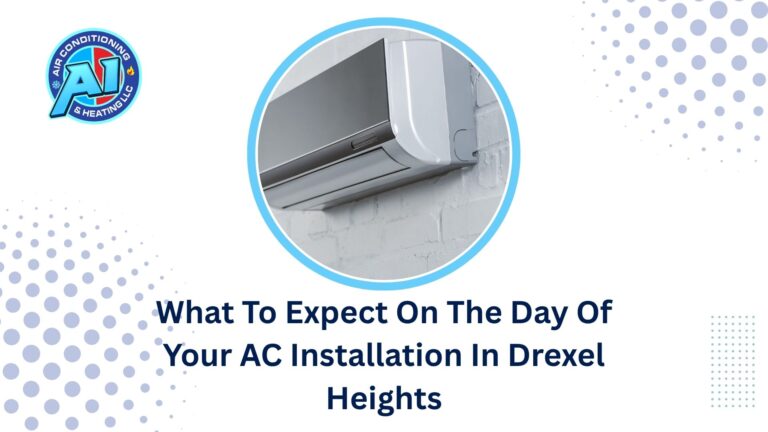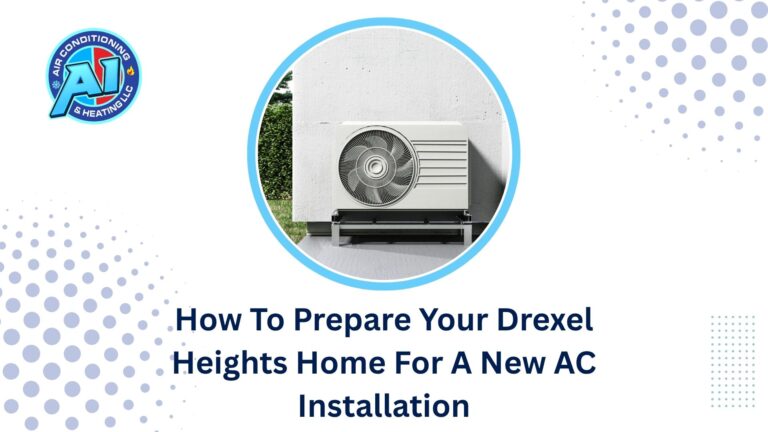Furnace systems have long been a popular choice for heating homes, but in a city like Tucson, you might wonder if a heat pump could be more suitable for your needs. Both options have their advantages and disadvantages depending on factors such as energy efficiency and operating costs. Understanding the differences can help you make the best decision for your comfort and budget. In this post, we’ll explore the key features, benefits, and drawbacks of each heating system to assist you in determining the ideal solution for your Tucson home.
Key Takeaways:
- Heat pumps are more energy-efficient and suitable for Tucson’s mild winters, providing both heating and cooling.
- Furnaces offer more powerful heating in colder conditions but may have higher operational costs over time.
- Initial installation costs for heat pumps can be higher, but they often result in lower energy bills compared to furnaces.
Understanding Heat Pumps
Heat pumps are versatile systems that provide efficient heating and cooling solutions, particularly well-suited for the climate of Tucson. They operate by transferring heat rather than generating it, making them exceptionally energy-efficient. Utilizing both air-source and ground-source technology, heat pumps can maintain comfortable indoor temperatures year-round while minimizing energy costs.
How Heat Pumps Work
Heat pumps use a refrigerant cycle to absorb heat from the outside air or ground and transfer it indoors. In the winter, they extract warmth even from chilly air, while in summer, they reverse the process to expel heat from your home. This method of heat exchange allows for a more consistent temperature control compared to traditional heating systems.
Advantages of Heat Pumps
One of the key advantages of heat pumps is their energy efficiency, significantly reducing your monthly utility bills. They produce more energy than they consume, often achieving a performance rating of 300-400%. Additionally, heat pumps are environmentally friendly as they release fewer greenhouse gases compared to fossil-fuel-based heating systems, making them a smart choice for sustainability.
Heat pumps not only help you save on energy costs but also offer dual functionality, serving as both heaters and air conditioners. This eliminates the need for separate systems, reducing installation and maintenance expenses. Operating quietly and requiring minimal maintenance, heat pumps typically have a long lifespan, averaging around 15 years or more, ensuring reliability and comfort for your home over time. Furthermore, government incentives may be available for heat pump installations, adding to their financial appeal.
Understanding Furnaces
Furnaces have been a staple in home heating systems for decades, utilizing combustion to generate heat. They’re commonly powered by natural gas, propane, or electricity and distribute warm air through ductwork. This method effectively raises the temperature in your home during cold months, ensuring comfort even in extreme weather conditions.
How Furnaces Work
Your furnace operates by igniting fuel, which produces heat. The heated air is then circulated through the home using a fan and duct system. Depending on the type of furnace, different ignition systems may be used, including standing pilot lights or electronic ignition, ensuring a quick and efficient start.
Advantages of Furnaces
Furnaces present several advantages, particularly in colder climates. They are known for their ability to generate high heat quickly, effectively warming your home even during harsh winter evenings. Moreover, the installation and maintenance processes are generally straightforward, and many furnace models can achieve high energy efficiency ratings.
The ability of furnaces to provide robust heating contributes significantly to their appeal. With high heat output, they can warm large spaces rapidly, which is particularly beneficial during extreme conditions. Additionally, modern furnaces can achieve AFUE ratings above 90%, signifying energy efficiency and potential savings on heating bills. They also tend to have lower upfront costs compared to heat pump systems, making them an accessible option for many households. Regular maintenance ensures optimal performance, providing you with reliable heat season after season.
Climate Considerations for Tucson
Tucson’s climate features hot summers and mild winters, creating unique heating challenges. While daytime temperatures can soar above 100°F in summer, nighttime temperatures during winter can drop to 30°F. This fluctuation necessitates a heating solution that not only addresses cold snaps but can also adapt to occasional chilly nights. Your heating choice should reflect these diverse needs for comfort year-round.
Typical Weather Patterns
The typical weather patterns in Tucson showcase a desert climate, with less than 12 inches of annual rainfall. Summer months are characterized by intense heat, yet winter brings cooler temperatures, especially at night. This diversity means that your heating system needs to effectively handle both extremes, ensuring comfort during those rare cold spells.
Energy Efficiency Ratings
Energy efficiency ratings of heating systems indicate how effectively they convert energy into heat. Systems with higher ratings, such as those with an Energy Efficiency Ratio (EER) or Seasonal Energy Efficiency Ratio (SEER) above 14, provide better performance and lower utility bills. For Tucson homeowners, choosing a unit with superior efficiency establishes long-term savings and environmental benefits.
Heating systems are often evaluated using various metrics, notably Annual Fuel Utilization Efficiency (AFUE) for furnaces, which measures the percentage of fuel converted into usable heat. A system rated 90% AFUE means 90% of every dollar spent on fuel translates into heat, making it vital to select high-efficiency models. Conversely, heat pumps offer HSPF (Heating Season Performance Factor) ratings indicating efficiency during colder months. The right ratings ensure you’re not just warming your home but also optimizing your energy usage and minimizing costs.
Cost Comparison
| Heating System | Estimated Costs |
|---|---|
| Heat Pump | $4,000 – $7,500 |
| Furnace | $2,500 – $6,000 |
Initial Installation Costs
For most Tucson homeowners, the initial installation costs of a heat pump typically range from $4,000 to $7,500, while a furnace may cost between $2,500 to $6,000. The higher upfront investment for a heat pump reflects its dual heating and cooling capabilities, making it a versatile choice for year-round comfort. Factors such as system size, efficiency rating, and installation complexity will influence the final price.
Long-Term Operating Costs
Considering long-term operating costs, heat pumps generally provide greater energy efficiency, leading to lower utility bills over time. You can expect heat pumps to consume 50% less energy compared to traditional heating systems. In contrast, furnaces may incur higher energy expenses, particularly during colder months when natural gas or electricity rates can spike.
When evaluating long-term operating costs, heat pumps often score better due to their efficiency in transferring heat rather than generating it. This efficiency often translates to substantial savings on your energy bills. You could see annual energy savings of up to $500 with a heat pump over a traditional gas furnace, making it a financially savvy choice for the long haul, particularly in Tucson’s milder climate.
Maintenance Requirements
Consistent maintenance is vital for both heat pumps and furnaces to ensure optimal performance and longevity. Regular upkeep not only keeps your system running efficiently but also reduces the risk of unexpected breakdowns. Understanding the specific needs of each system will help you make informed decisions regarding service schedules and costs.
Heat Pump Maintenance
Heat pumps require seasonal maintenance that includes cleaning or replacing filters every 1-3 months to maintain airflow. Additionally, checking the outdoor unit for debris and ensuring that the refrigerant levels are optimal is crucial for efficient heating. Professional inspections should be scheduled annually to assess the overall system functionality.
Furnace Maintenance
Your furnace benefits from annual maintenance, including checking the thermostat calibration, inspecting the heat exchanger for cracks, and cleaning the burners. Changing the air filter every one to three months prevents airflow issues and keeps your indoor air quality high. Addressing these tasks can significantly enhance the system’s safety and efficiency.
Beyond simple tasks, furnace maintenance involves examining key components such as the ignition system and gas lines for any signs of wear or leaks. A worn-out filter can lead to a frozen system, while unchecked gas lines pose significant risks. Investing in thorough annual inspections from a certified technician can prevent costly repairs and ensure a safe heating environment in your home. Regular maintenance not only prolongs the life of your furnace but also keeps heating bills manageable by enhancing efficiency.
Environmental Impact
The environmental implications of heating systems play a significant role in your decision-making. Heat pumps utilize electricity and transfer heat rather than generating it through combustion, leading to a lower carbon footprint. In contrast, traditional furnaces typically rely on fossil fuels, which contribute to air pollutants and greenhouse gas emissions, impacting air quality and climate change.
Sustainability of Heat Pumps
Heat pumps are recognized for their sustainability and efficiency, providing heating and cooling with minimal environmental harm. Utilizing renewable electricity sources enhances their eco-friendliness, as they often achieve 300-400% efficiency ratings, far exceeding traditional heating methods. You also reduce reliance on fossil fuels, fostering a more sustainable future.
Emissions from Furnaces
Furnaces emit significant quantities of carbon dioxide and other pollutants due to their reliance on fossil fuels like natural gas or oil. This results in an average household emitting approximately 5,000 to 10,000 pounds of carbon dioxide annually, contributing to climate change and affecting local air quality. Moreover, depending on the fuel type and efficiency, other harmful emissions may include nitrogen oxides and particulates, posing health risks.
Emissions from furnaces are not just numbers; they represent significant environmental challenges. For example, a standard gas furnace emits about 1.5 tons of CO2 each heating season. This can critically affect your community’s air quality, especially in urban areas. Transitioning to cleaner heating solutions like heat pumps not only benefits your home but also positively impacts the environment and public health, creating a bottom line that supports sustainability goals.
Summing up
Choosing between a heat pump and a furnace can be challenging, especially in Tucson’s mild desert climate. While furnaces have long been a reliable source of warmth, heat pumps often offer a more energy-efficient and eco-friendly solution for local homeowners.
This guide from A1 Air Conditioning & Heating LLC, a trusted HVAC contractor in Tucson, explores how each system works, their key benefits, costs, and energy efficiency ratings. Heat pumps provide year-round comfort with both heating and cooling functions, making them ideal for Tucson’s mild winters. Furnaces, on the other hand, deliver stronger, faster heat and can be more affordable upfront, though they may cost more to operate over time.
By comparing performance, maintenance needs, and environmental impact, A1 Air Conditioning & Heating LLC helps Tucson homeowners make informed decisions about the best heating solution for their comfort and budget — ensuring reliable warmth and efficiency all year long.




